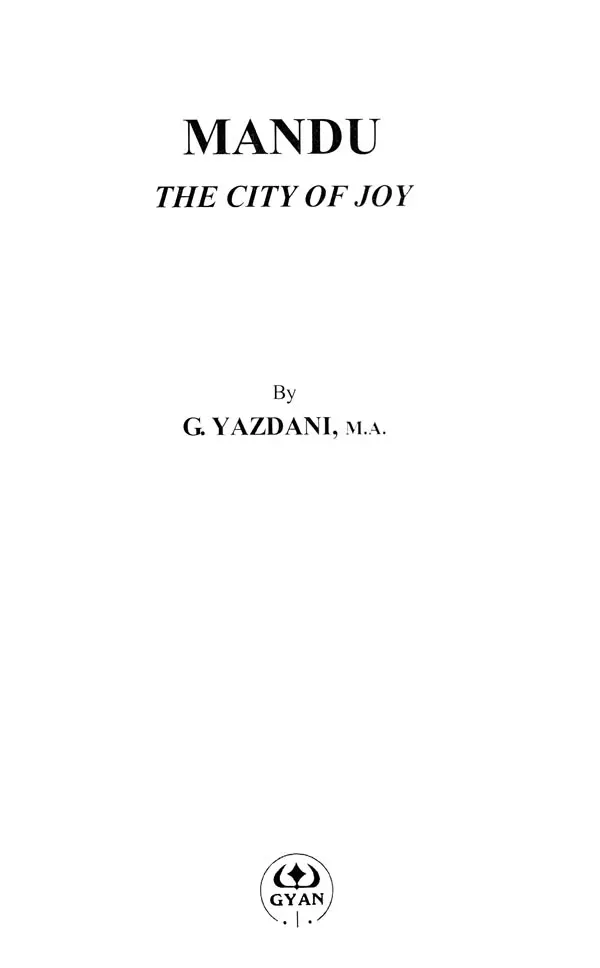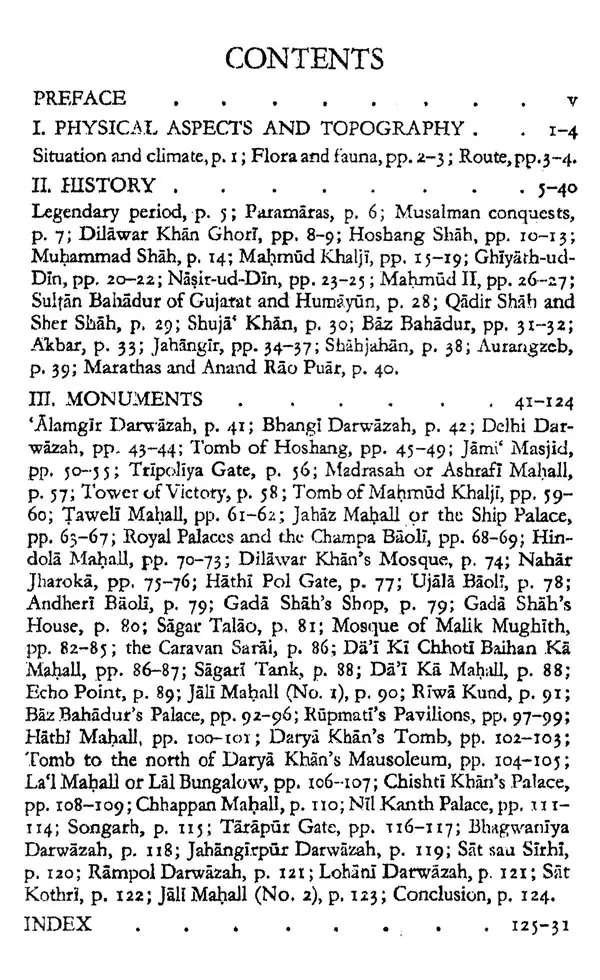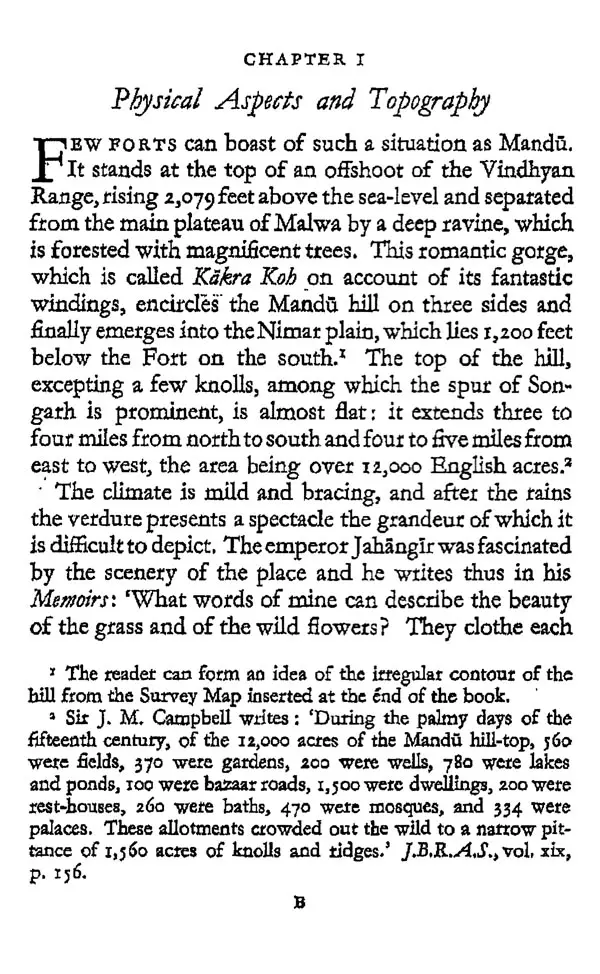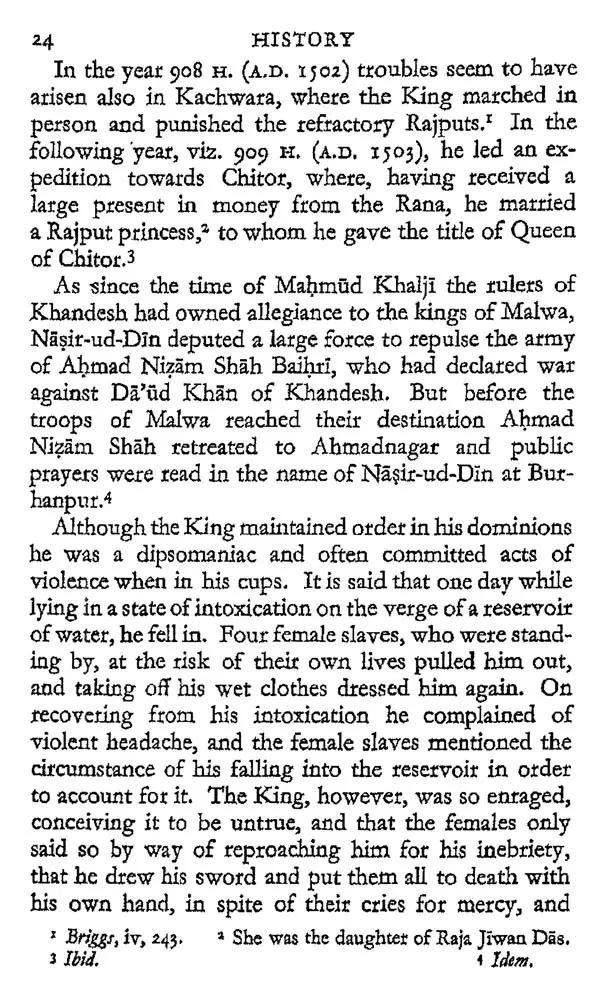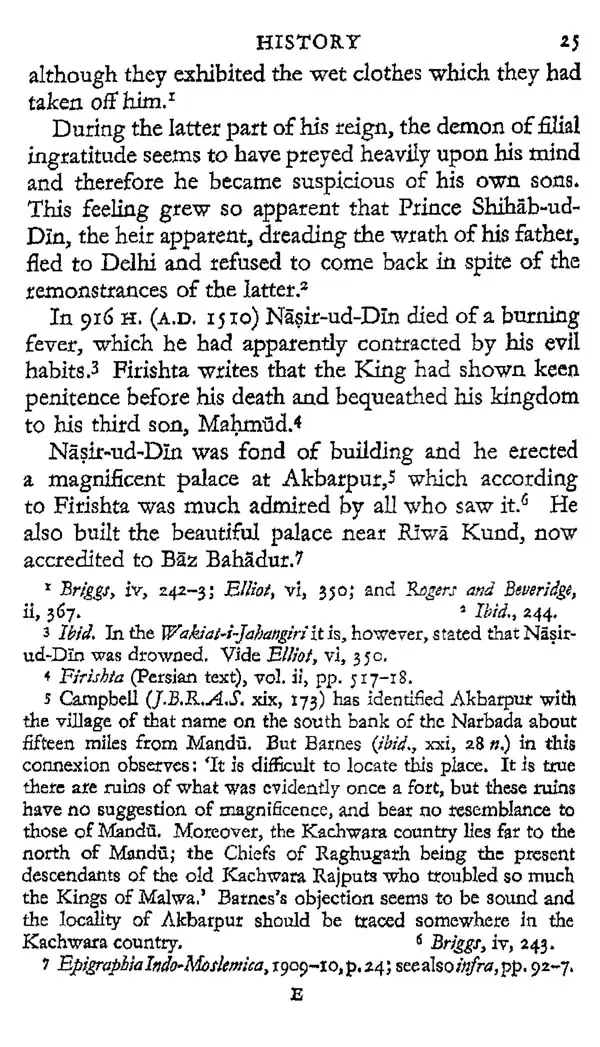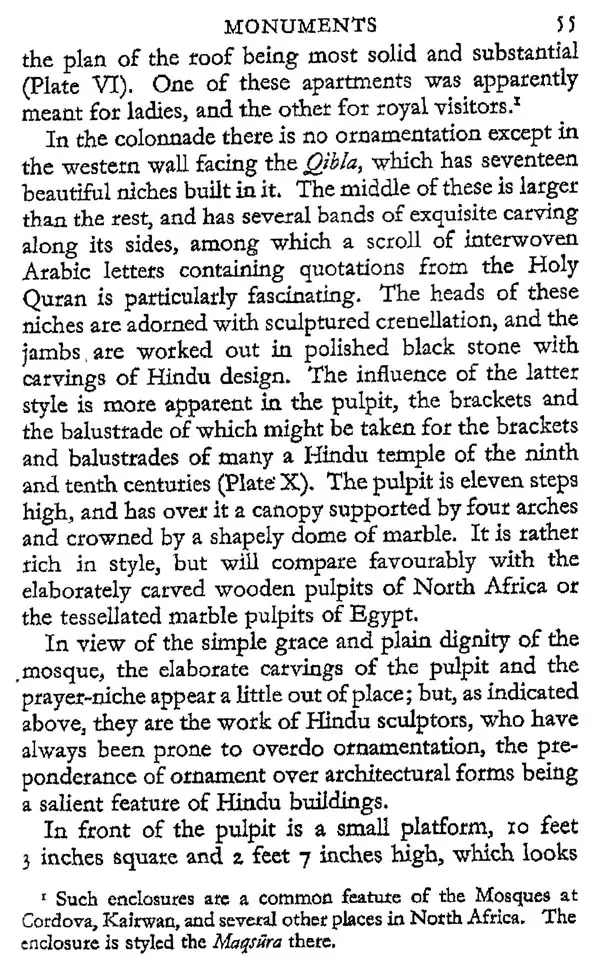
Mandu: The City Of Joy
Book Specification
| Item Code: | UBE637 |
| Author: | G.Yazdani |
| Publisher: | Gyan Publishing House, New Delhi |
| Language: | English |
| Edition: | 2022 |
| ISBN: | 9788121266574 |
| Pages: | 143 (Throughout B/w Illustrations) |
| Cover: | PAPERBACK |
| Other Details | 8.50 X 5.50 inch |
| Weight | 290 gm |
Book Description
The present book presents to the reader a clear account of the history and monuments of Mandu and with this object a large number of photographs and architectural plans have also been included.
Ghulam Yazdani, OBE (1885-1962) was an Indian archaeologist who was one of the founders of the Archaeological Department during the colonial era reign of Nizam of Hyderabad. He also edited the Arabic and Persian Supplement of Epigraphia Indica from 1913 to 1940. He was instrumental in surveying and documenting Islamic, Buddhist, Hindu and Jain sites in the Hyderabad state, including major mosques in the region, the caves at Ajanta, Ellora caves, Alampur group of temples, Ramappa Temple, Bidar fort, and Daulatabad Fort, among many others. Yazdani led archaeological surveys were periodically published as Annual Reports of the Archaeological Department of His Exalted Highness the Nizam's Dominions.
romantic history of Mandu and the tales of its beautiful monuments had always fascinated me and I often dreamt of visiting the Pleasure City (Shädiäbad) where King Ghiyath-ud-Din held a retinue of 15,000 damsels or where the gallant Chief, Baz Bahadur, was allured by the sweet voice of Rupmati. The realization of my dreams, however, came in a somewhat unexpected manner.
His Highness the Maharaja of Dhar, in whose territory Mandü is situated, came to hear of my interest in archacology and was kind enough to send me an assurance of welcome and an invitation to visit his State, His Exalted Highness the Nizam was graciously pleased to grant me permission to take advantage of this kind offer and to treat my stay at Mandu as time spent on duty. This was in 1925, but shortly afterwards the regrettable news of the illness and subsequent death of the Maharaja of Dhar was received, and thus I never had the privilege of seeing the Ruler who had invited me to Mandu and whose name is so honoured in Central India.
The Dhar Darbar, however, continued to evince interest in my visit, and when I went over there in 1927, the Diwan, Rao Bahadur K. Nadkar, was kind enough not only to arrange for the comfort of my party, but also to lend me the services of a draughtsmar to draw the plans of the important buildings. In the end, the Dhar Darbar were also pleased to propose that the results of my studies should be published at their expense in the form of a guide book. I have therefore to thank the Dhar Darbar most sincerely not only for their hospitality and courtesy, but also for the opportunity they have given me of publishing the results of my studies in their present form.
As to the scope of this book, I must explain that it has been written for the ordinary visitor and may therefore be found lacking in those details which can be incorporated only in monographs of greater bulk. No endeavour, however, has been spared to present to the reader a clear account of the monuments, and with this object a large number of photographs and architectural plans have been included in the book.
Book's Contents and Sample Pages
